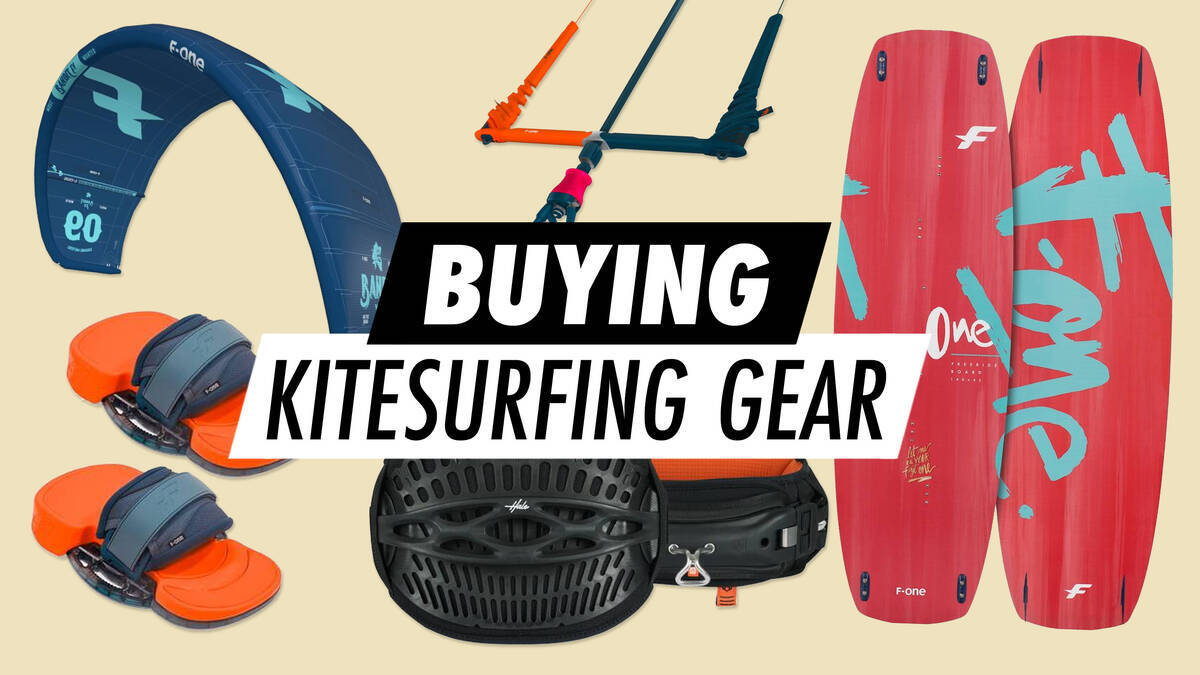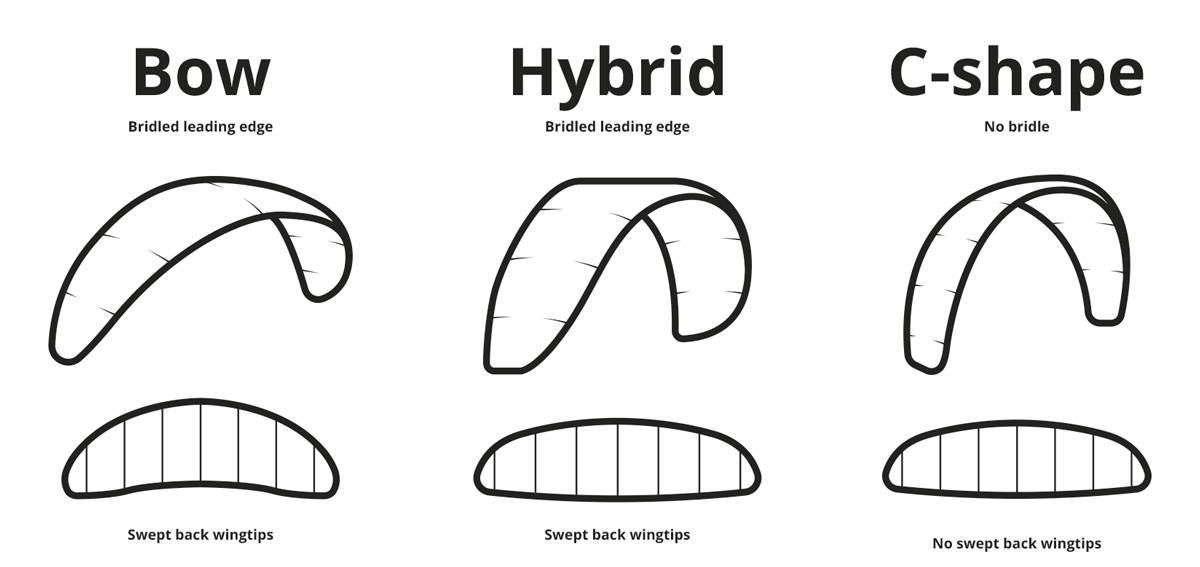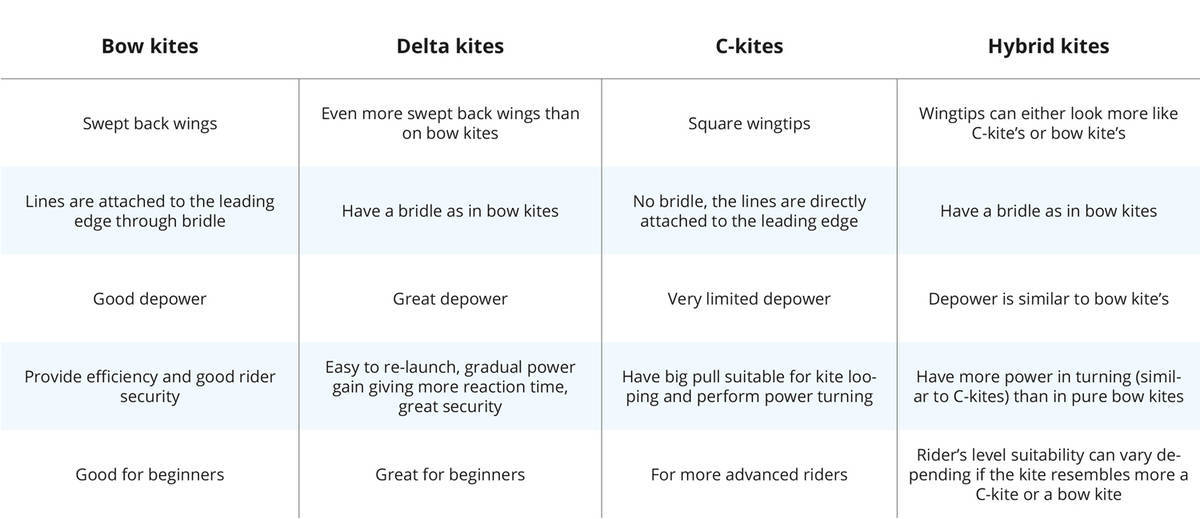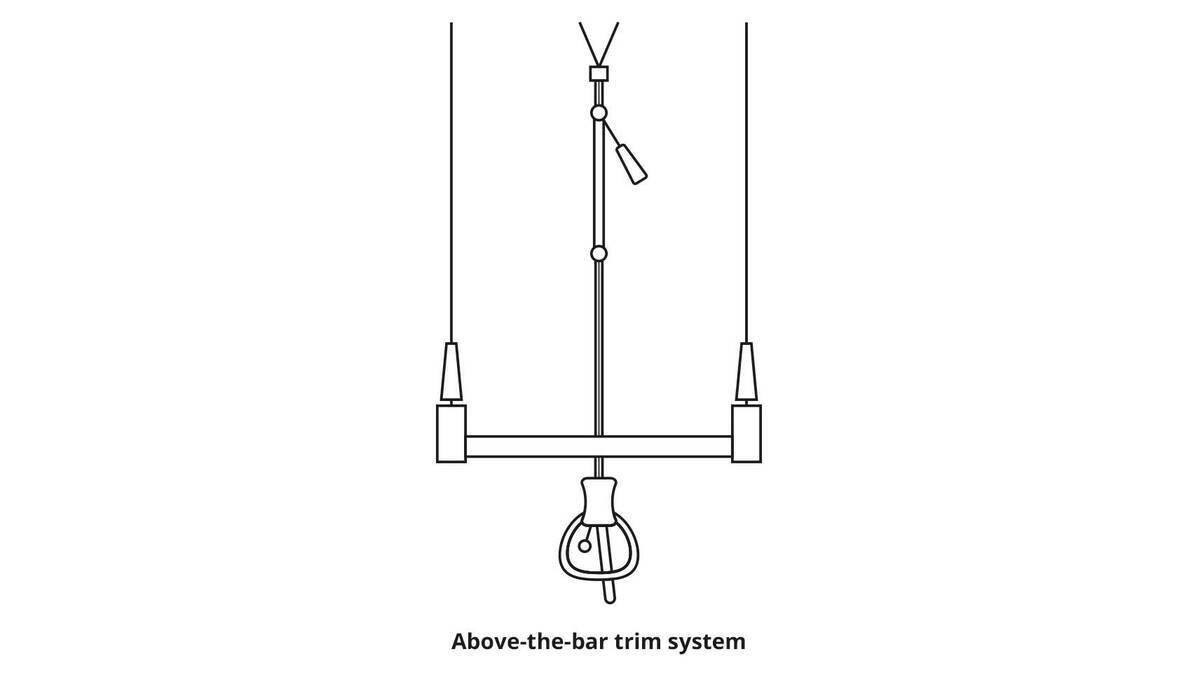Purchasing Kitesurfing Equipment

The kiteboard and the kite are the most crucial components in kitesurfing. Below is some beneficial information to aid in your decision-making regarding these items.
1. The Kite
Kites differ in shape, size, and design. The primary categories include Bow kites, Delta kites, C-kites, and Hybrid kites. Each type possesses unique attributes, making them suitable for varying situations. Researching the wind conditions in your intended kitesurfing location is vital, as wind strength significantly impacts kite performance. For instance, larger kites are more effective in lighter winds, whereas smaller kites are preferable for stronger winds.

In the chart below, two key terms require explanation and comprehension since they define a fundamental distinction among these kites.
The bridle refers to a configuration of lines linked to the leading edge of your kite. These lines can be organised differently based on the kite design. It resembles a spider’s web at the kite's front edge and converges into one line, to which the bar lines are attached. The bridle essentially enables better kite control, particularly in terms of power adjustment. For instance, C-kites without a bridle exhibit a more explosive power boost, allowing for advanced manoeuvres but necessitating greater expertise to manage.
The bridle provides an increased degree of depower compared to the C-kite design. Depowering your kite involves flattening it, which reduces its surface interaction with the wind, thereby decreasing its pulling force.

2. Bar and Lines
To control the kite, you require a bar and lines. A kite harness must be worn, connecting to the chicken loop on the bar and thus to the lines. Once these steps are completed, you gain control over the bar, lines ('your steering wheel'), and the kite itself.
The bar and lines facilitate kite control, enabling turns, acceleration, and deceleration. Various configurations exist for bar and line setups, with the 4-line bar being notably common. In this setup, two central lines connect to the leading edge via the depower mechanism, while the remaining lines connect to the wing tips to steer the kite and permit depowering and powering. These are typically colour-coded and matched with knots to the bar tip lines for ease of correct attachment.

Examining the bar in detail reveals numerous arrangements, varying by manufacturer. Predominant distinctions include the 'above-the-bar trim system' and 'under-the-bar trim system'. The former provides more mobility, though depower accessibility may be more challenging, while the latter offers easier access as the depower is nearer, albeit potentially more troublesome to reach.

Notably, when replacing lines, ensure you purchase the correct length for your specific kite model, as incorrect lengths can affect your accustomed kite control.
3. The Kiteboard
Your kiteboard is another fundamental aspect of kitesurfing. Similar to other board sports, significant considerations regarding kiteboards include:
- The shape: The board can be twin tip (symmetrical front and rear) or directional (like a surfboard). Furthermore, boards may be square or round. Square shapes excel in edging, upwind, and pop, while round shapes are advantageous for carving and offer softer landings.
- The rocker: This denotes the board's tip-to-tail curvature. A higher rocker (more curved) enhances pop, whereas flatter boards are superior for edging.
- The concave: Incorporating concave (board curve between side edges) enhances riding smoothness and softens landings.
- The fins: You may choose to use fins or go finless. Incorporating larger fins increases stability in choppy waters and helps with edging and upwind travel. Conversely, smaller fins improve gliding smoothly on the water.
- The size: Different brands offer various size recommendations, generally dependent on weight and skill level. The board must support your weight and maintain floatation while the kite powers it. Beginners will benefit from selecting a slightly larger board for increased buoyancy, eventually transitioning to a shorter board as skills develop, allowing for easy planing and involvement in kitesurfing activities.
4. Are you new to kitesurfing?
If you are just starting in kitesurfing, ensure that you:
- Select a kite with effective depower capabilities
- Secure protective equipment (Helmet, safety knife, and possibly an impact vest)
- Attend an introductory kitesurfing course (Guided sessions are beneficial)
- Partner with a kite buddy; it is safer and more enjoyable to kite with a companion
